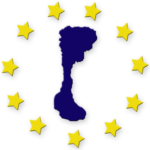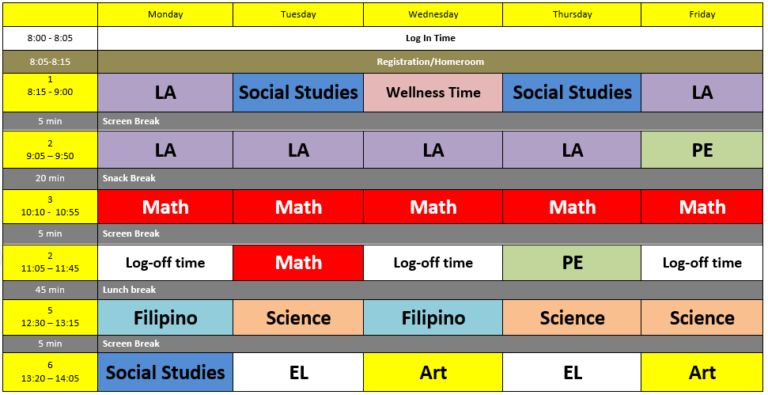Grade 3
Welcome to the Grade 3 page
Below you can find out a little more about school life and what we get up to in Grade 3

Ms Nikki Barias
Grade 3 Teacher

Ms Edelyn Lacina
Grade 3 Teacher's Assistant
Curriculum Overview
Language Arts
Grammar
- Able to use Capitalization.
- Produce simple, compound, and complex sentences; using conjunctions.
- Form and use regular and irregular verbs
- Form and use regular and irregular plural nouns
- Form and use superlative and comparative adjectives and adverbs.
- Use of all nouns
- Write sentences in present, past and future tense.
- Use of commas, quotation marks and apostrophes.
Reading
- Ask and answer questions.
- Recount stories.
- Describe characters in a story.
- Critically analyze and explain how character’s actions contribute to the sequence of events.
- Understand point of view.
- Compare and contrast themes, plots and characters.
Writing
Students will learn how to write:
- Opinion Pieces
- Informative/ Explanatory Pieces
- Narrative Writing
Students will:
- Produce and publish writing using (development, editing, and use of technology)
- Research to Build and Present Knowledge
Speaking & Listening
- Engage in collaborative discussions
- Determine the main ideas and supporting details when reading aloud.
- Ask and answer questions.
- Participate in debates and prepare speeches.
Social Studies
Vikings
- Describe the Vikings and their way of life.
- Locate the regions the Vikings occupied on the map.
- Compare and contrast the Vikings to the Ancient Romans.
- Describe and sketch the Viking ships.
- Retell the legends of Eric the Red and Leif Eriksson.
- Learn about the Viking Gods and myths.
World Rivers
- Understand why civilizations sprang up alongside rivers.
- Explain how irrigation helped farmers.
- Define terminology related to rivers.
- Identify rivers of the world.
- Describe how rivers were used for trading
- Discuss the dangers that face navigators on the river.
Ancient Rome
- Recall the legends surrounding Ancient Rome.
- Identify the Roman Gods and Goddesses.
- Describe the Roman Republic and its society.
- Retell the Punic Wars and explain their importance in the history of Ancient Rome.
- Explain who Julius Caesar and Cleopatra were.
- Explain why Julius Caesar was killed.
- Describe how Caesar Augustus improved Rome.
- Understand how the Mediterranean Sea and Roman roads helped the Romans manage their empire.
Physical Education
- Learn the difference between jogging and running.
- Jump and land in different planes.
- Balance using curling, twisting and stretching actions.
- Throw underhand to a partner or target
- Catch a gently tossed hand-size ball
- Dribble and travel with the ball.
- Pass and receive a ball with the insides of the feet to a stationary partner.
- Volley a ball using different patterns.
- Work independently for extended periods of time.
- Engage actively in the activities of physical education class without teacher prompting.
KP
- Learn basic Malaynon Greetings and conversation.
- Describe and compare Philippine physical feature, weather and climate, foods and vegetables grow in a certain area.
- Distinguish Filipinos physical characteristics
- Explain the way of life of early Filipinos and compare past and present.
- Recognize different mythical creatures; to know the characteristics and the story, and to create a story.
Art
- Able to create cards
- Create mosaic art and design
- Make crafts using paper mache
- Create Head Pieces (UN Day)
- Create their own Cartoons
- Make Flowers from Crepe Paper
- Make Snowmen from ice-cream sticks
- Design and make posters
- Complete still life drawings
- Create oil Paintings on Canvas
Science
The Introduction to Science
- Learn about the investigating process in science.
- Understand how models are used.
- Compare scientific results.
Life Science
- Describe and draw plant and animal life cycles.
- Classify animals.
- Explain why plants and animals change and adapt.
- Identify structural adaptations in plants and animals.
- Investigate the different ecosystems of the world.
- Distinguish the trophic levels in food chains and food webs.
- Relate how environmental changes affect living things.
- Understand and evaluate changes to the earth’s surface.
Earth & Space Science
- Explain the water cycle.
- Differentiate between the different forms of precipitation.
- Understand the need for hydrologists in the world.
- Explain the factors that affect weather.
- Identify the seasons in relation to the position of the Earth on its axis.
- Understand the movement of the moon and the Earth.
- Model the phases of the moon.
Physical Science
- Compare the physical properties of matter.
- Draw the states of matter.
- Explain the physical properties of matter.
- Understand how simple machines work.
Mathematics
Numbers and Operations & Algebraic thinking
- Solve problems involving multiplication and division.
- Understand properties of multiplication.
- Relate multiplication and division.
- Multiply and divide within 100.
- Identify and explain patterns in arithmetic.
- Use place value understanding and properties of operations.
Numbers and Operations – Fractions
- Develop understanding of fractions as numbers
- Fraction as a number on the number line
- Equivalence of fractions in special cases; compare fractions by reasoning about their size.
Geometry
- Understand that shapes in different categories may share attributes.
- Partition shapes into parts with equal areas.
Measurement
- Be able to measure and estimate.
- Predict time to the nearest minute; measure time intervals in minutes. Solve word problems involving addition and subtraction of time intervals in minutes.
- Measure and estimate liquid volumes and masses of objects.
- Add, subtract, multiply, or divide to solve one-step word problems involving masses or volumes.
ICT
Microsoft Word
- Browse documents
- Insert hyperlink
- Remove hyperlink
- Insert bullet and number list
- Insert symbols and equations
- Insert page break and section break
- Work with tables, headers and footers
- Copy, move, delete and rename files
- Print files
- Troubleshoot printing
- Copy, move, delete and rename files
- Print files
- Troubleshoot printing
Typing Skills
- Introduce home row keys
- Key drills

